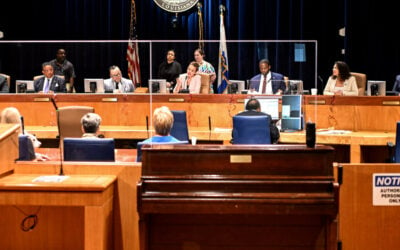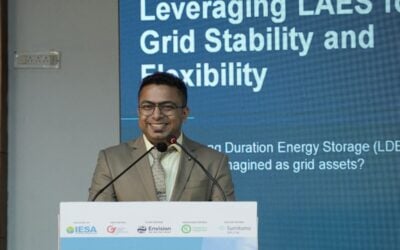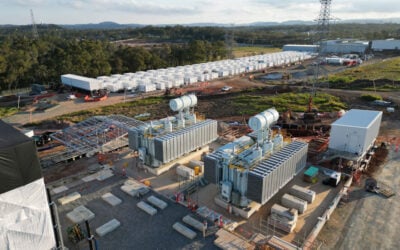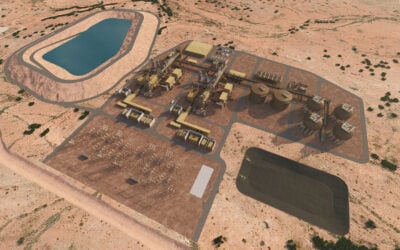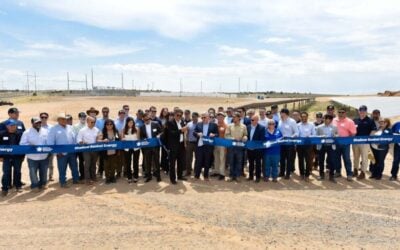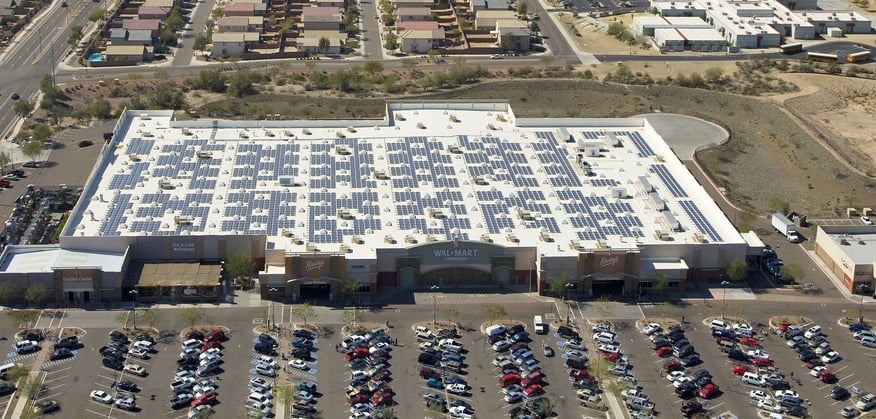
A 3,000MW energy storage target, proposed in Arizona as part of a grid modernisation policy, recognises the role of the technology in reducing the need for fossil fuels to stabilise the grid, a consultant has said.
Yesterday, Andy Tobin of the state’s regulator, the Corporation Commission, presented a plan that includes a goal to generate 80% of Arizona’s power from renewable sources by 2050, a commitment to review the existing Renewable Energy Standard and Tariff (REST) policy, to use renewables to mitigate peaks establishing a ‘Clean Peak’ standard and to deploy 3,000MW of energy storage to “leverage low priced energy during the day”.
The Commission will vote on the proposal in the next couple of weeks. A final vote is expected which would make the regulatory proposal legally binding, within six months to a year, Lon Huber, vice president and head of consulting at Stratagen Consulting, told Energy-Storage.News.
The 3GW target would be the biggest established to date in the US – the first state to set a target, California, is calling for 1.35GW by 2024 and New York for 1.5GW by 2025. While the timeline for deployment is longer for Arizona than those two previous title-holders, Huber pointed out that relative to the state’s size, the figure pencils out at a far higher capacity deployed per capita than in the others.
Try Premium for just $1
- Full premium access for the first month at only $1
- Converts to an annual rate after 30 days unless cancelled
- Cancel anytime during the trial period
Premium Benefits
- Expert industry analysis and interviews
- Digital access to PV Tech Power journal
- Exclusive event discounts
Or get the full Premium subscription right away
Or continue reading this article for free
Lon Huber said the establishment of the target is closely linked to known plans for development of new gas turbine facilities by Arizona’s major utilities, including Arizona Public Service, which is projecting that it will need 5GW of new gas plants by 2032. Huber said it was likely the 3,000MW figure was arrived at as “a fraction of the new combustion turbines in the IRP (Integrated Resource Plans) of the utilities”.
“I think the assessment of what could be cost-effective storage was probably based on the need for new peakers over the next 15 years, more than anything. I think the innovation here is that, depending on different states and how they do things, you could end up in a situation where you buy a lot of renewables but you still need a large fossil backup fleet.”
While renewables-plus-storage may not be ready to take over the role of large thermal generation plants – and in the case of Arizona, the US’ largest nuclear power plant – in providing baseload energy, Huber said that in the hierarchy of needs, peaker plants which are often only run on a part-time basis to stabilise the grid, come first. In a recent blog for Energy-Storage.News, Marek Kubik at storage system provider and integrator Fluence wrote about an academic study into Ireland’s grid which showed the role batteries could play there in stabilising the grid using far less capacity than thermal generation.
Huber said Tobin and the Corporation Commission appear to have realised that ratepayers should not have to pay for both the renewables deployed and the fossil fuels used to stabilise their variable output onto the grid, with Arizona set to use “renewables to whittle down that fossil backup fleet, so that ratepayers don’t pay twice for resources”.
Essentially, with utility-scale solar prices lower than wholesale in Arizona, at as low as 2.5 to 3 cents per kWh on a 25-year PPA, the state has “super-cheap fuel” which it can now use for meeting peak demand, Huber said.
The plan
The multi-faceted proposal calls for:
Modernisation of policy framework – including renaming the REST policy the Clean Resource Energy Standard and Tariff (CREST). The Commission said will “allow for the development of broader diversified energy policies relating to clean energy resources, energy storage, and energy efficiency, not just those related to renewable energy”.
80% clean energy goal – the state will generate 80% of its energy from renewable and clean sources by 2050, with an “ultimate 100% goal”, although no timeline has been given for the latter. Utilities will file annual CREST plans with the regulator to demonstrate how they will work towards achieving these goals.
3,000MW energy storage target by 2030 – the Commission aims to enable the state to “leverage” off-peak power generated during the day by solar, as well as adding resilience and stability to the grid network. Again, utilities will file annual CREST implementation plans with the regulator.
Biomass – 60MW target for utilities to procure annually between them. Part of the idea behind this policy is to sustainably source fuel from forests which pose a wildfire risk if their growth is kept unchecked.
Clean Peak standard – regulated utilities will be required to set a Clean Peak Target, harnessing dipatchable renewable energy. The utilities must incrementally increase their baseline figure of peak energy coming from renewable sources by 1.5% each year, again filing annual CREST implementation plans with the Corporation Commission.
Utility view
Lon Huber said that while there have been well-publicised battles over solar in Arizona, particularly in a pushback against rooftop solar from utilities, utility–scale PV in the state is far cheaper and with a higher capacity value, hence support for utility solar has been strong for some time.
“The distribution system in Arizona is not like in New York or California, there’s not huge constrained load pocket that you can’t get wires into and so there’s no way a distribution system can make up for a seven cent gap or whatever it is. So I think it’s important to note that Arizona is a different animal in terms of distributed versus utility-scale,” Huber said.
The utilities will have to modify their 15-year IRPs to meet the new standards, Huber said and it will be a case of “wait and see” what the likes of TEP, APS and NV Energy – which recently announced a renewables tender that included consideration of energy storage – have to say as major stakeholders in the energy system. The Arizona CREST proposal could be a “wake up call” for other states, according to Lon Huber.
“We’ll see how other states react to it. It’s anyone’s guess but I think it should send a little bit of a wake-up call to certain states that maybe haven’t thought about modernising their renewable energy policy…That’s sort of like the key thing. Other states should take note – technology is improving, why don’t you update your policies to take that into account?”

